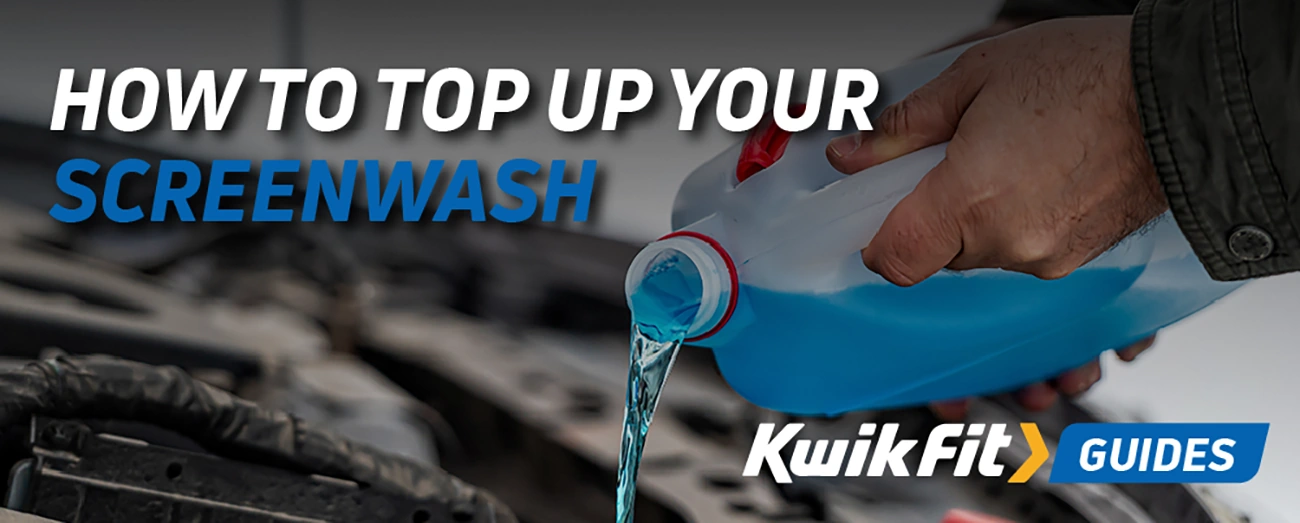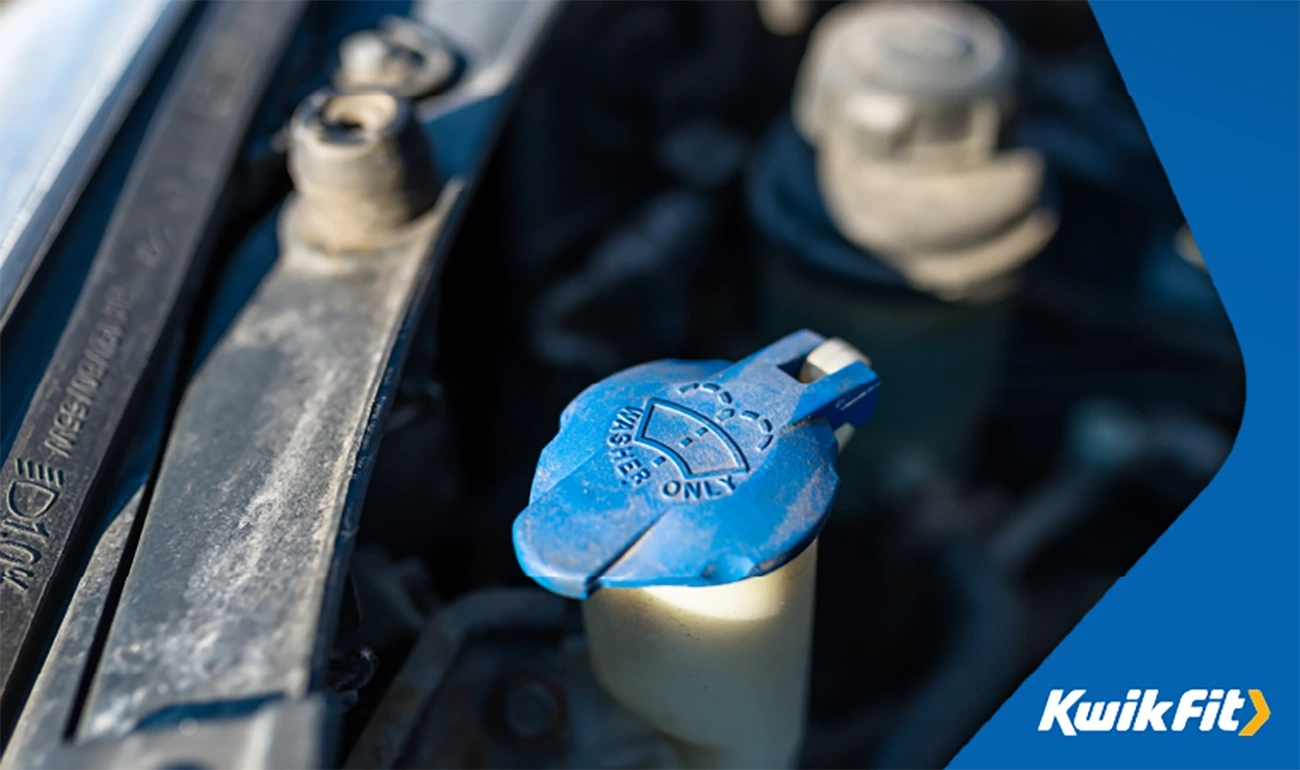How To Top Up Your Screenwash
A 7-step guide to topping up your vehicles screenwash.

- Make sure to park on a level surface, and open the bonnet.
- Find the windscreen washer fluid tank.
- Twist or flip open the fluid cap.
- Check the screenwash level (if you can see in the tank).
- Pour in the screenwash to the desired level on the tank.
- Secure the cap back on your tank.
- Test your wipers to ensure they are cleaning your windscreen.
Topping up your vehicle's screenwash is quick and easy. It may come as a huge surprise to many people, but having an empty windscreen washer fluid tank can actually fail an MOT test. After all, a dirty and obstructed windscreen – especially when driving at speed – is one of the most dangerous things to happen on the road. Considering the surprise about screenwash being on MOT tests, we thought we’d answer some more questions around screenwash.
What is the purpose of screenwash?
As it says on the tin, screenwash is the fluid sprayed onto the windscreen and back window of cars to help the wipers clear any obstructions. It might seem minor, but something as simple as a bird doing its business on your windscreen or a thoughtless driver throwing something out of their window can reduce visibility and make it harder to stop in a safe place.
Is antifreeze a screenwash?
While screenwash tends to include some additives to prevent freezing, it’s completely different from antifreeze. Antifreeze, otherwise known as glycol, is used to help cool engines and is usually made from ethylene or propylene mixtures.
Screenwash often contains ethanol or methanol in order to help stop freezing, and, more importantly, to help dissolve any grease on the windscreen. These are usually called “non-residual de-greasers”, and come in handy in a number of mechanical applications too!
Imagine spilling milkshake on a mirror. If you spray water on it and try to wipe it off, you’re likely to smear it around rather than get it off. Screenwash acts as the detergent that lets you wipe it off.
Can you use water as screenwash?
No, using water alone may help remove some forms of debris from your windscreen, but you need actual screenwash to effectively remove grime. Water on its own is not sufficient to clean the screen, because it doesn’t get rid of any oils or grease. Additionally, using water in colder temperatures could freeze, potentially causing damage to the washer system or leaving you with no way to clear your windscreen in icy conditions.
Should you dilute screenwash?
Some screenwashes come as concentrated solutions, so you should only ever dilute these to the right ratios specified by each manufacturer. Many windscreen washer fluid bottles you’d find in petrol stations will already be at the right dilution levels – so you can just pour them straight into the tank.
In the colder months, ensure your screenwash has antifreeze properties or choose one formulated for winter, as this will prevent freezing in the washer system.
Where do you put screenwash?
The screenwash reservoir cap is usually in the engine bay and tends to have a brightly coloured cap so that it’s easier to spot in low visibility conditions. It will almost always have a symbol embossed on it that looks like some water being sprayed onto a windscreen. It is essential to regularly check and top up your screen wash, especially before long journeys or during winter, when your windscreen will likely need more frequent cleaning. Be sure to avoid overfilling the tank.

Can you mix windscreen washer fluid?
Mixing windscreen washer fluid with different brands is not usually a problem. The only problem is that it may become less effective if one brand has a particular additive for a particular application or benefit.
Keep your view clear with Kwik Fit
At Kwik Fit, we’re committed to helping you maintain a clear view of the road with expert advice on screenwash and windscreen care. If you have any questions about topping up your screenwash, maintaining your windscreen wipers, or any windscreen-related concerns, we’re here to assist. You can visit any of our centres for expert guidance and support.
For more information on how we can help with MOT, servicing, tyres and more, simply visit your local Kwik Fit centre today, or check out our latest blogs for more information.






